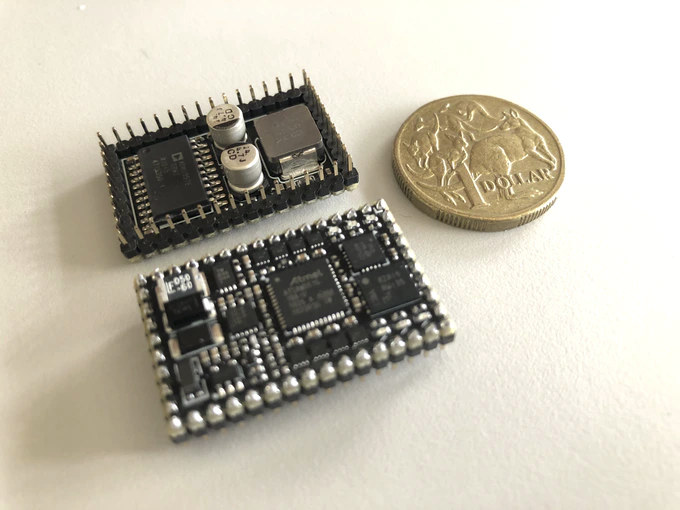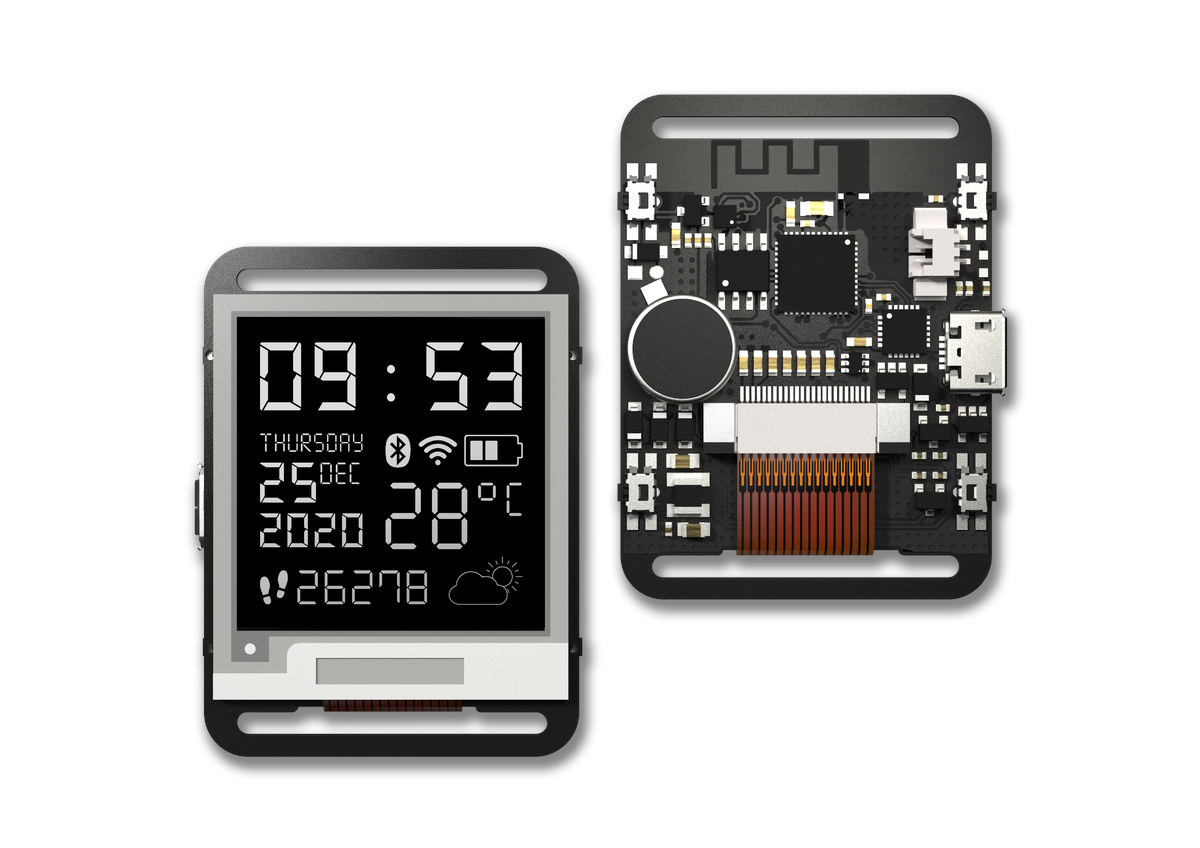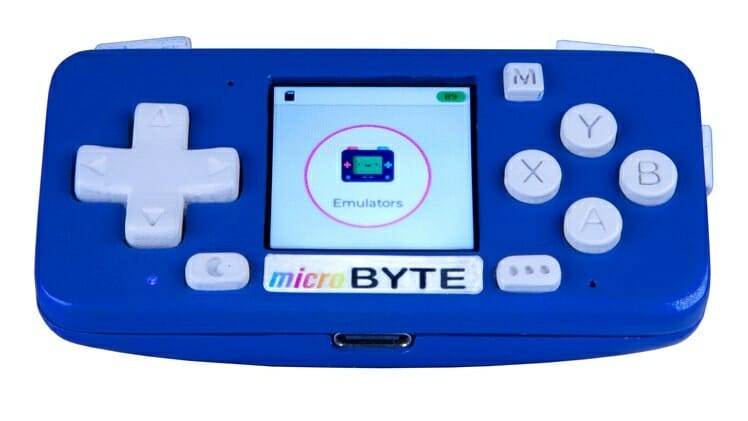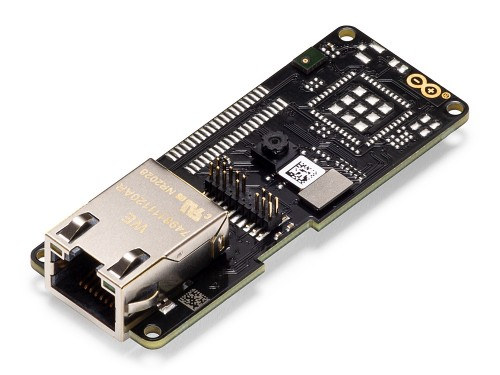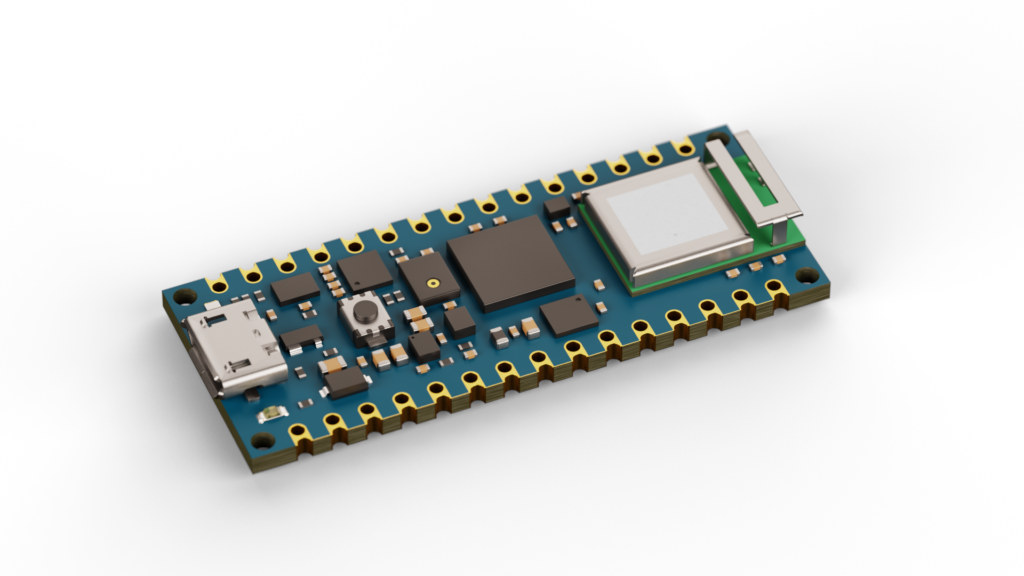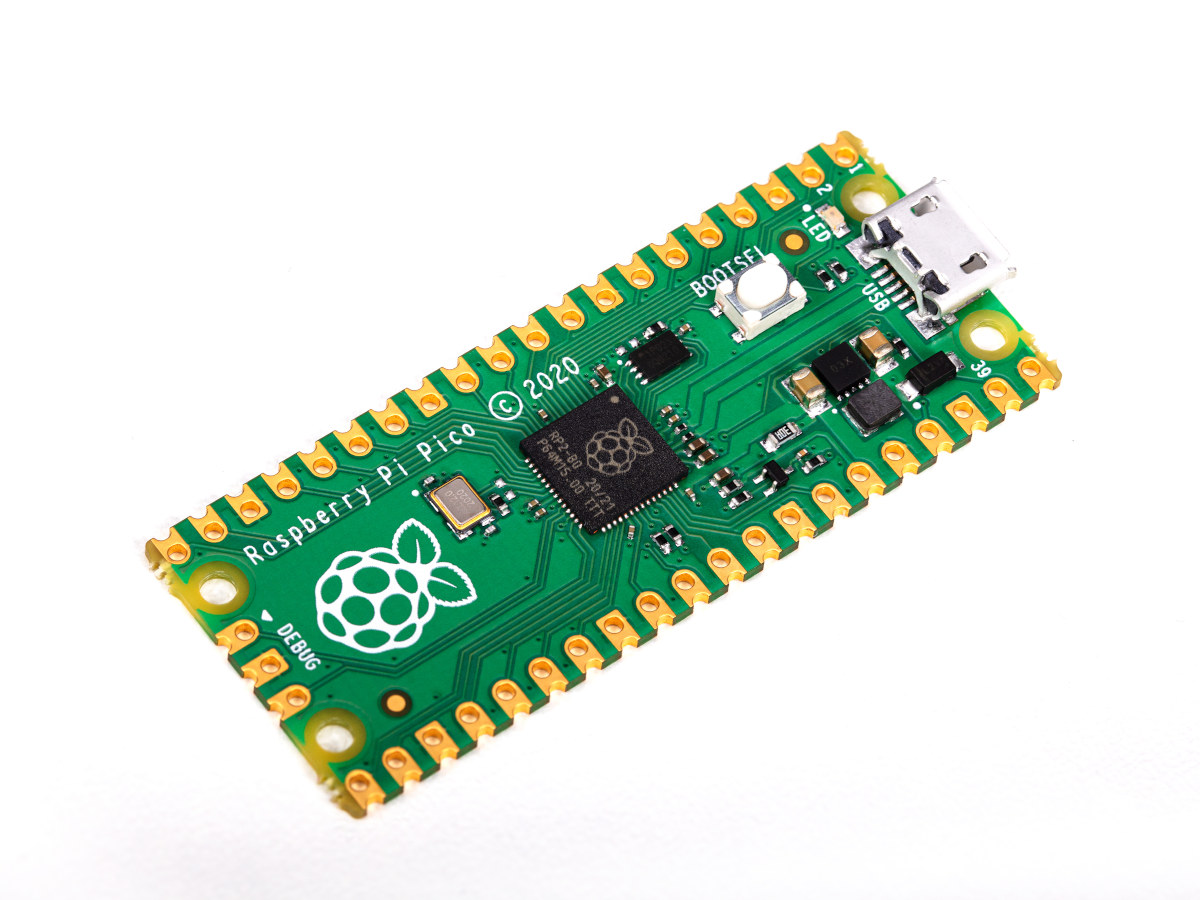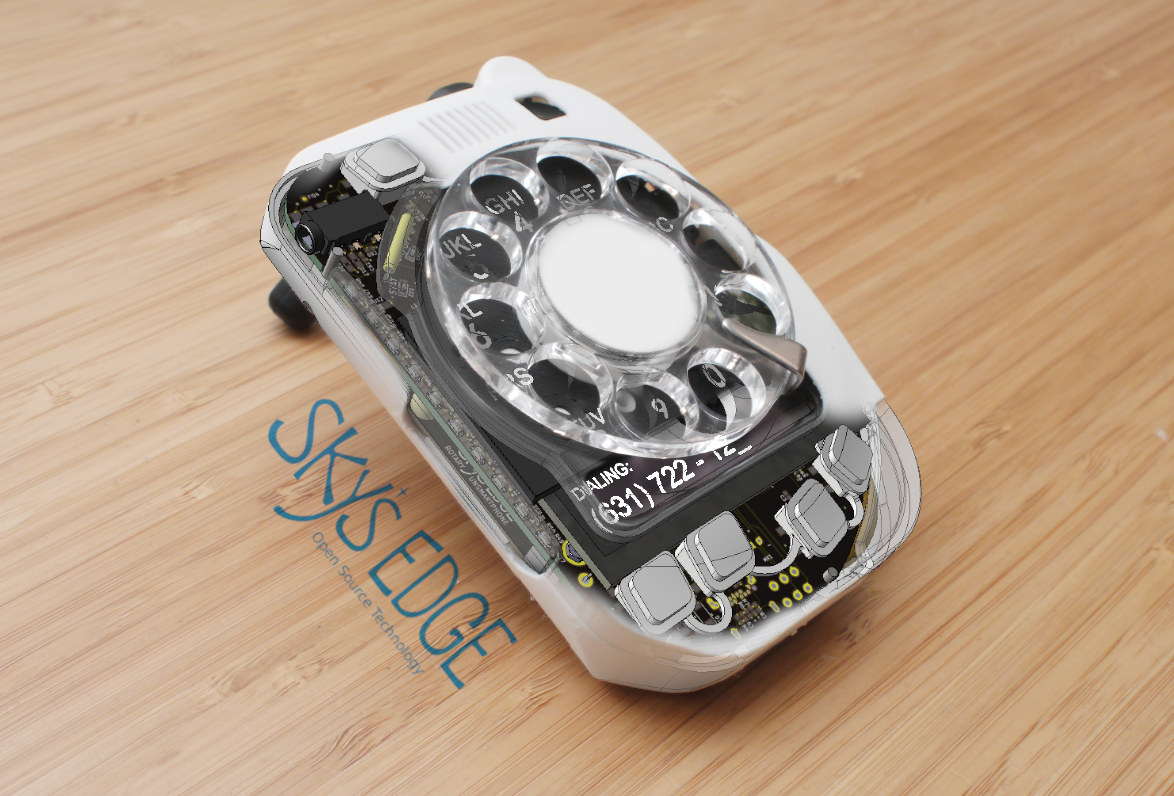SRKH Designs’ microZERO is a tiny, Arduino compatible module based on Microchip SAMD21 Arm Cortex-M0+ microcontroller for applications such as drone control, mobile platforms such as cars, trucks, boats and bikes, and other products working in demanding environments. The company has also designed two baseboards, namely Dev Board A with RGB color high resolution IPS display and the more classic Dev Board B, both mostly following Arduino UNO form factor to get started with development and/or evaluation. microZERO specifications MCU – Microchip SAMD21G18 Arm Cortex-M0+ @ 48 MHz with 256KB flash, 32KB SRAM Storage – 16MB SPI flash memory for additional storage and remote firmware upgrades I/Os 32x protected IO with 6x ADC, SPI, I2C, 6x PWM, TCC, USART, 1-WB, I2S, and USB 1 Mbps CAN controller with fully isolated and filtered CAN transceiver for maximum signal integrity 2mm pitch footprint Security – Microchip ATECCA508/608 software protection encryption IC Misc […]
Watchy Pebble-like Smartwatch with E-paper display, ESP32 processor launched on Crowd Supply
Pebble smartwatch was introduced in 2012 on Kickstarter. The Bluetooth smartwatch came with an E-Paper display, would connect to your Android smartphone or iPhone to receive notifications or other info, and the company also released an SDK for further customization. It was quite popular at the time having sold over one million units, the Pebble Time followed in 2015 with a color display, as well as other models. But despite selling millions of watches, the company folded in 2016, and the Pebble was discontinued after the intellectual property was purchased by Fitbit. Watchy is a new smartwatch that reminds me of the original pebble. It is based on ESP32 WiFi & Bluetooth SoC, equipped with a 1.54-inch E-Paper display with 200×200 resolution, and the usual accelerometer for activity tracking and gesture detection. Watchy key features and specifications: SIP – Espressif Systems ESP32-PICO-D4 system-in-package with ESP32 dual-core processor with Bluetooth LE […]
MutantC v3 open hardware DIY UMPC works with Raspberry Pi and compatible SBC’s
FOSDEM 2021 open-source developer event will take place online later this week, and yesterday we compiled a list of talks, with one entitled “MutantC PDA introduction – open source and hardware PDA shell” piquing my interest. The talk will be about the third revision of the hardware which allows you to create your own UMPC or handheld computer powered by a Raspberry Pi SBC or other compatible single board computers including Asus Tinker Board S, PINE H64 Model B, Banana Pi BPI-M4B, among others. MutantC v3 is versatile and highly customizable as can be seen from the specifications highlights: Supported SBCs – Raspberry Pi Zero, 2, 3, 4 and compatible. Arduino for keyboard – SparkFun Pro Micro 5v/16Mhz or SparkFun Qwiic Pro Micro – USB-C Display – 2.8-inch, 3.5-inch, or 4-inch “GPIO” LCD such as AdaFruit PiTFT 480×320 display Custom PCBs for display, mainboard, and thumbstick Expansion External 12-pin “docking” […]
microByte ESP32 portable game console comes with a 1.3-inch display (Crowdfunding)
We’ve previously seen programmable, portable game consoles powered by Espressif Systems ESP32 processor with the likes of ODROID-GO or WiFiBoy32 both equipped with a 2.4-inch display, and design to play retro games or create IoT projects with a small display thanks to I/O headers. But if for some reason, you’d like an even more compact ESP32 portable game console based on the WiFi & Bluetooth SoC, Byte-Mix Labs microByte may be what you are looking for thanks to a tiny 1.3-inch square display. microByte specifications: Wireless module – ESP32-WROVER-E module with ESP32 dual-core processor @ 240 MHz, 8 MB PSRAM, 16 MB flash, and integrated Wi-Fi and Bluetooth antenna Storage – MIcroSD card slot Display – 1.3-inch ST7789 IPS Screen with 240 x 240 pixel resolution, 60 Hz max refresh frequency Audio – On-board speaker powered by a MAX98357AETE+T I2S amplifier Controls – 13x onboard buttons with 8x Inductive direction […]
Arduino Portenta H7 Gets Embedded Vision Shield with Ethernet or LoRa Connectivity
[Update January 28, 2021: The LoRa version of Portenta Vision Shield is now available] Announced last January at CES 2020, Arduino Portenta H7 is the first board part industrial-grade “Arduino Pro” Portenta family. The Arduino MKR-sized MCU board has plenty of processing power thanks to STMicro STM32H7 dual-core Arm Cortex-M7/M4 microcontroller. It was launched with a baseboard providing access to all I/Os and ports like Ethernet, USB, CAN bus, mPCIe socket (USB), etc… But as AI moves to the very edge, it makes perfect sense for Arduino to launch Portenta Vision Shield with a low-power camera, two microphones, and a choice of wired (Ethernet) or wireless (LoRA) connectivity for machine learning applications. Portenta Vision Shield key features and specifications: Storage – MicroSD card socket Camera – Himax HM-01B0 camera module with 324 x 324 active pixel resolution with support for QVGA Image sensor – High sensitivity 3.6μ BrightSense pixel technology […]
Third-party Raspberry Pi RP2040 boards from Arduino, Adafruit, Sparkfun and Pimoroni
I’ve just written about the launch of the Raspberry Pi Pico board and Raspberry Pi RP2040 MCU, which, as I explained in the announcement, could be used with third-party boards, but what I was not made aware during the embargo was that RP2040 boards were already being worked on, and other companies jointly announced their own custom Raspberry Pi Pico compatible board with Adafruit, Arduino, Pimoroni, and Sparkfun joining the party. Arduino Nano RP2040 Connect Board When I first wrote about Raspberry Pi Pico, I really saw it would be a competitor to Arduino boards, but instead Arduino and Raspberry Pi joined hands to design Arduino Nano RP2040 Connect with the board including 16MB external SPI flash, a u-blox NINA WiFi & Bluetooth module, an STMicro MEMS sensor with 9-axis IMU and microphone, and the ECC608 crypto chip. That obviously means Arduino Core will also support the new RP2040 MCU. […]
$4 Raspberry Pi Pico board features RP2040 dual-core Cortex-M0+ MCU
The Raspberry Pi Foundation introduced the Linux-capable Raspberry Pi board in 2012 to teach programming and computers. Since then, the company has introduced models with faster processors, more memory, faster interfaces, culminating with the launch of Raspberry Pi 4 in 2019. The board also comes with a 40-pin header to teach electronics, but relying on a Linux SBC to blink a LED, gather data from sensors, or controlling servos is a bit over the top. So the Raspberry Pi Foundation decided to create their own MCU board called Raspberry Pi Pico powered by RP2040 dual-core Cortex-M0+ microcontroller designed in-house by the foundation. Raspberry Pi RP2040 microcontroller Before we look at the board, let’s check out RP2040 specifications highlights: Core – Dual Cortex M0+ cores up to 133 MHz (48MHz default) Memory – 264 kB of embedded SRAM in 6 banks Peripherals 30 multifunction GPIO 6 dedicated IO for SPI Flash […]
Rotary Un-Smartphone is a rotary dial phone based on Arduino, 4G LTE module
If you feel nostalgic and misses the days of the rotary dial phone, Sky’s Edge “Rotary Un-Smartphone” is an open-source hardware rotary dial phone controlled by an Arduino board and equipped with a multi-mode 4G/3G/2G module. It’s a bit more advanced that you old rotary phone with recent cellular technology, ePaper & OLED displays, quick dialing buttons, and the rotary dial can both be used to dial full phone number or quickly access your contact list. Key features of the Rotary Un-Smartphone: MCU board – Arduino board based on AtMega2560 MCU Storage – MicroSD card to store contacts list Displays – Front-side OLED and back-side ePaper displays Cellular Connectivity 4G/3G/2G connectivity via u-Blox TOBY-L2 module Voice calls and SMS (receive-only) supported SIM card slot Internal antenna; expansion space for user-supplied external antenna Audio Microphone and speaker 3.5mm TRRS headset jack Mechanical ringer bell made from polished brass; externally visible Misc […]


